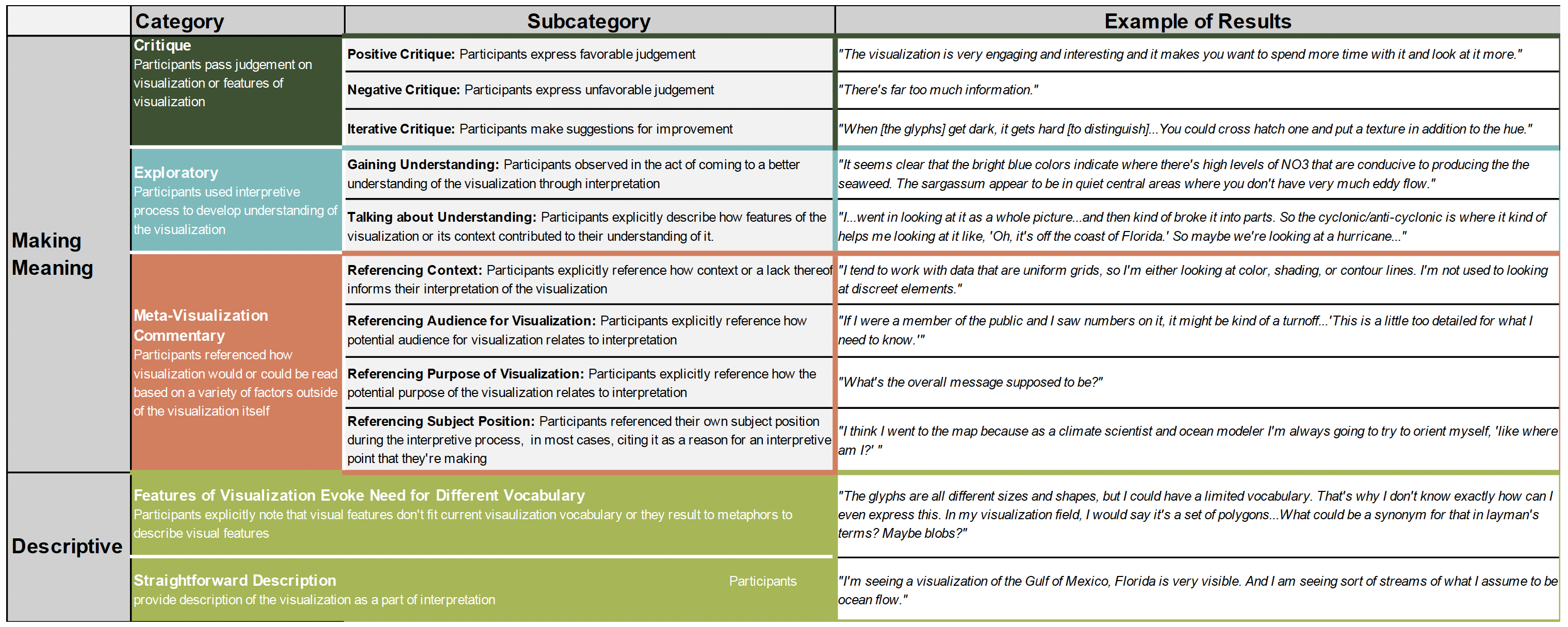Visualization Software Architectures for Arts, Humanities,
and STEM Integration
Evaluation: Close Reading
This is some text talking about evaluation in general
Close Reading as a Method for Evaluating Visualizations

Visualization research and practice that incorporates the arts make claims to being more effective in connecting with users on a human level. However, these claims are difficult to measure quantitatively. This work encompasses several studies on using close reading, a humanities method from literary studies, to evaluate visualizations created using artistic processes, including Artifact-Based Rendering. To use close reading as an evaluation method, we guided participants through a series of steps designed to prompt them to interpret the visualization’s formal, informational, and contextual features. The papers collected here elaborate on our motivations for using close reading as a method to evaluate visualizations, and enumerate the procedures we used in the study to evaluate a 2D visualization, including modifications made because of the COVID-19 pandemic. Key findings of these studies include that close reading is an effective formative method to elicit information related to interpretation and critique; user subject position; and suspicion or skepticism. Information gained through close reading is valuable in the visualization design and iteration processes, both related to designing features and other formal elements more effectively, as well as in considering larger questions of context and framing.

Publications

- @inproceedings{inproceedings,
- author = {Bares, Annie and Zeller, Stephanie and Jackson, Cullen and Keefe, Daniel and Samsel, Francesca},
- year = {2020},
- month = {10},
- pages = {29-37},
- title = {Using Close Reading as a Method for Evaluating Visualizations},
- doi = {10.1109/BELIV51497.2020.00011}
- }
(2020).(29-37)
(cite)
Sculpting Visualizations © 2021